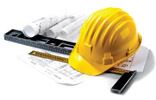Architectural Engineering and Construction, Durham School of

Durham School of Architectural Engineering and Construction: Faculty Publications
Document Type
Article
Date of this Version
2016
Citation
Procedia Computer Science 86 ( 2016 ) 176 – 179, doi: 10.1016/j.procs.2016.05.050.
Abstract
Rooftop Units (RTUs) have been widely applied in providing space heating and cooling for commercial buildings. In total, they serve over 60% of the commercial building floor space in the U.S. Even through the current control approaches of a RTU can maintain the zone temperature corresponding to a set point temperature, it performs inefficiently due to several factors such as limited sensing capability, non- coordinated local control, inherent oversizing effects and so on. In addition to unnecessary power consumptions, the current control and operation technology on RTUs also lead to the space humidity problem, equipment efficiency degradation, and premature failure. To solve aforementioned problems and enhance the overall system performance, this paper presents the development of a coordination control technique for improving the system operations of multiple RTUs used in light commercial buildings with an open space. In the control algorithm, simplified building models were developed to potentially estimate the instantaneous building load. Utilizing this model-based technique, sequence control strategy is designed to automatically select suitable mode operations of a RTU including economizing, heating, cooling and ventilation mode while synchronizing with the supply fan control and damper operations. Using a developed building simulation platform implemented on Matlab software, the developed coordination control is applied in reducing energy penalty caused by an inherent oversizing problem on multiple RTUs. With the findings, the control algorithm can be further used as a soft-repair for temporally fixing faulty operations and improper commissioning of multiple RTUs such as excessive or insufficient air flow, outdoor air leakage, stuck dampers and simultaneous heating and cooling (RTU fighting).
Included in
Architectural Engineering Commons, Construction Engineering Commons, Environmental Design Commons, Other Engineering Commons


Comments
© 2016 The Authors. Published by Elsevier B.V. This is an open access article under the CC BY-NC-ND license.